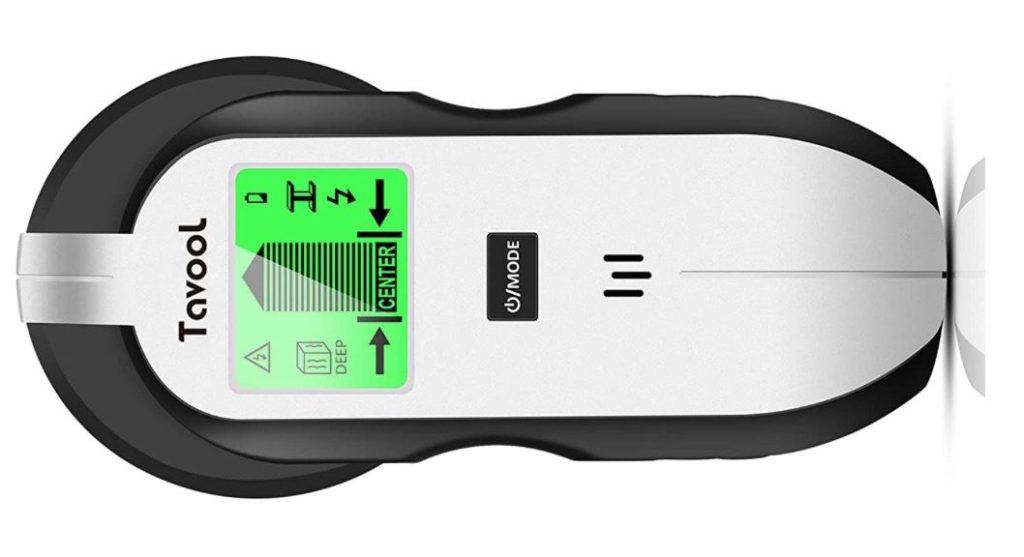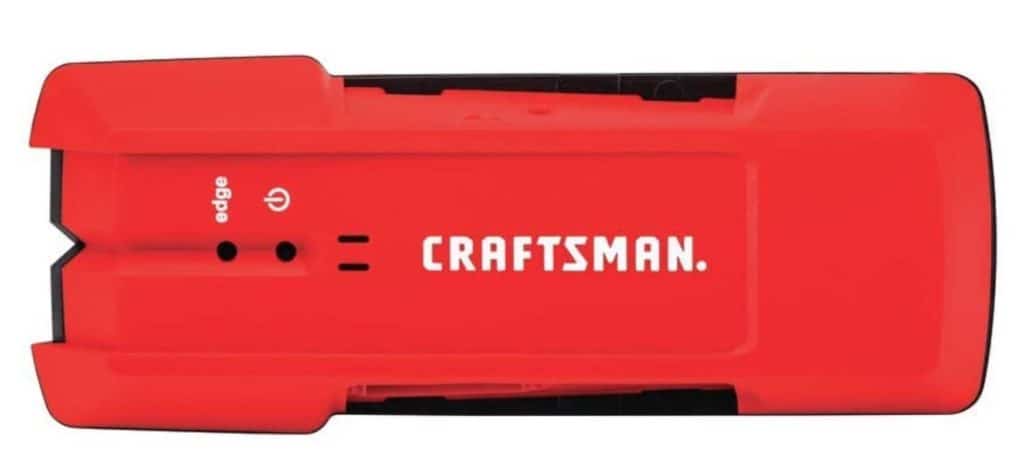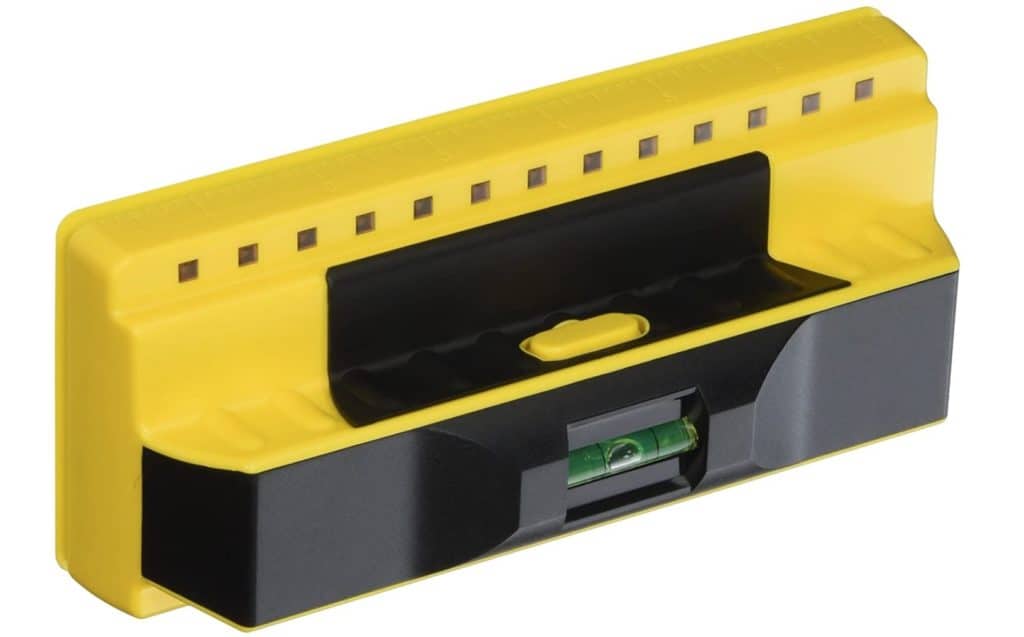The use of framing studs is quite commonplace, which means a huge number of us have the same problem: finding the studs behind our drywall. Sure you can use the good ‘ole knock method, but we all know that’s not very reliable.
It’s time to buy s stud finder.
Stud Finder Basics
A stud finder, also known as stud sensor or stud detector, this is a small scanning tool that is used for detecting what’s behind your wall. Based on the use of different technologies, stud finders fall into three categories:
- Magnetic stud finders: There are two types of magnetic stud finders namely stationary magnetic detectors and moving magnetic detectors. These look ferrous metal behind the wall, mainly nails and screws.
- Electronic stud finders: This type has three different varieties called edge finders, center finders, and instant stud finders. These tools examine the relative permittivity of the area behind the wall, which will differ if there is a stud there or air.
- Radar stud finders: A relatively new advance, these emit a signal that senses material behind the wall. The future is now!
Top Stud Finders
Here are a five all-star stud finders to choose from…

The Budget Pick: Tavool Stud Finder
The Tavool wall sensor is a feature-full budget pick that goes for about $30. It’s a multi-sensor that can detect wood studs, wires, and live AC wiring. This model will detect wood studs at a depth of up to 1.2 inches and copper pipes and similarly dense materials at up to 1.7 inches.
Interesting most of the options sold on Amazon seem to be a variant of those some, or at least a close relative. This Tavool model is the best-seller and has the most, and most positive, reviews.
- User-friendly anti-slip and top grade plastic grip
- Multi-sense technology for on target quick results
- Easy to use HD graphical LCD display
- Auto calibration function for optimum authenticity
- Intelligent micro-processor on-board

Budget Pick: Craftsman Stud Finder
The Craftsman stud sensor is a simple stud finder with none of the advanced features of the Tavool. On the other hand, it can be yours for under $10 and almost everyone knows and trusts the Craftsman name.
This model only works with up to 3/4 inch depth so it’s going to be pretty limited compared to the high-tech sensors that have been coming out lately.
- 3/4 inch depth range through drywall
- Works on surfaces coated with fabric or wallpaper
- Discovers metal as well as wood studs
- Body is water and shock resistant
- Lifetime warranty
- Weight: 8.8 ounces

The Pro Pick
The Franklin Sensors ProSensor 710+ (model FS710PRO) has an eye-watering price tag compared to the rest of the pack, but it has a feature set to match. This finder has 13 sensors and a extra wide design that is ideal for finding studs, and can tell you how wide the stud is as well.
This stud sensor doesn’t have all the features of some of the computer-like high-tech devices that can find stud (among other things), rather it’s simply designed to be the best stud finder possible.
- Fastest scan speed
- No calibration needed
- Built-in bubble level
- Extra width for seeing exactly where the stud is (and where it’s not)
- 13 sensors: Many more than a non-pro stud finder
- Width allows you to see double studs
Budget Pick: If you want to save some money but also get a stud sensor in this style you can lose a few sensors and drop the width down to 4″ and get the Franklin Sensors T9 for about $40.
Stud Finder and Laser Measure In One
The Meterk 2-in-1 is a stud finder and laser distance measure in one tool. You’ll pay a premium to get the two tools combined, but when you are using one you’ll usually need the other, so it make a lot of sense to combine them.
- LCD Backlit Display
- High-Precision detector for fast discovery
- Precision technology multi-function distance meter for accuracy
- Energy saving auto-off
- Mute setting to limit the beeps and bloops
Using a Standard Stud Finder
Many stud scanners have different modes that can be set by the user to detect various objects hidden beneath the surface of the wall.
Stud Mode for Near Objects
Put the stud finder on this mode to discover metal studs and edges of wood that settled up to 19 mm into the finish.
Metal Scan
The basic use of this mode is to avoid strong objects like pipes and ferrous materials.
AC Wire Mode
Use this mode to detect live electric wires inside the wall. Experienced stud finder users suggest using this mode first before beginning the actual scanning on any surface. This will avoid many unwanted accidents.
A stud finder is a very basic tool that is handy to have around, but it can also be an advanced device that anybody can use to get optimum results.
